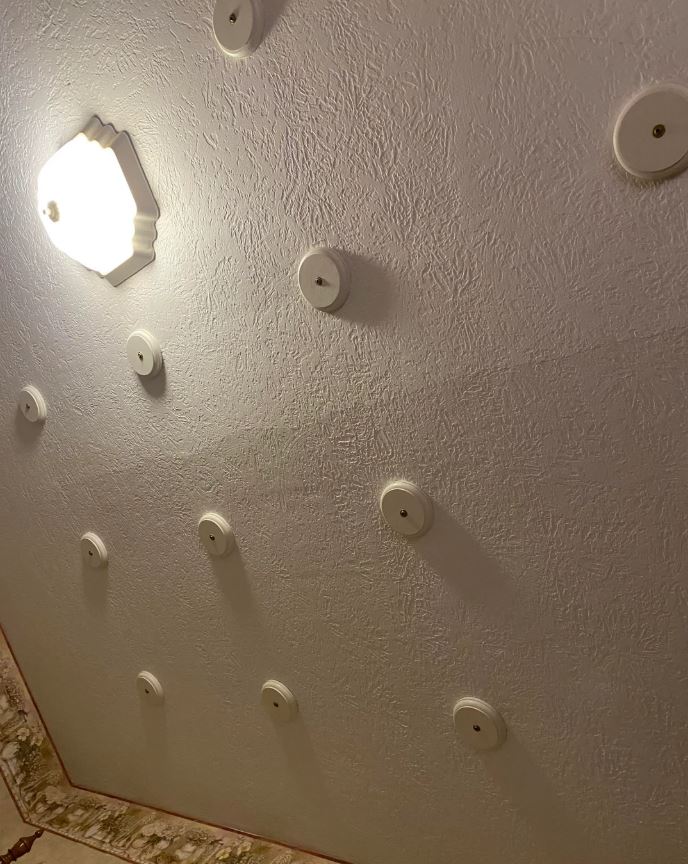Lying on the bed of a hotel room, drained from a long journey and too exhausted to even nap, I stared up at the ceiling and noticed something strange—a series of small wooden discs arranged in a grid pattern, like a half-finished project abandoned by a carpenter who suddenly vanished. At first, I assumed they were remnants of an old chandelier or maybe part of some strange audio system, but I’d seen this before in older buildings and now recognized their purpose.

If you’ve ever visited an aging house or stayed in a quirky, old-fashioned hotel, you’ve probably seen them too. These little wooden circles are more than decoration or mistakes—they’re an old-school solution to a common problem: sagging plaster ceilings. Let me explain. Before modern drywall changed the construction game, builders used lath and plaster to construct walls and ceilings. This involved nailing thin wooden slats (called lath) to the framework, then covering them with wet plaster, which would seep between the slats and harden as it dried. It was effective but high-maintenance and didn’t age all that gracefully. Fast-forward a century, and that once-sturdy plaster begins to crack, dry out, and separate from the lath beneath it. Thanks to gravity, sagging becomes inevitable, and in some cases, large chunks of plaster fall right off—don’t ask me how I know, but let’s just say one of my lamps met an untimely end. You might think the logical fix would be to screw the plaster back in place, but that’s a bad idea—it’s too brittle and would only crumble.
That’s where the wooden discs come in. By screwing through a disc roughly the size of a silver dollar and anchoring it into the lath behind the plaster, you create a wide surface that distributes the pressure, pulling the plaster back into place without cracking it. It’s not fancy or high-tech, but it works, like a supportive hand lifting the ceiling back into place. While metal plaster washers are available for the same purpose, wooden discs are a cheap, easy, and surprisingly long-lasting alternative. I know this from personal experience. Years ago, I lived in a wobbly 1920s bungalow with a dining room ceiling that looked like it was ready to cave in. I wasn’t prepared to do a full renovation, so I drilled some pilot holes, screwed the wooden discs in a checkerboard pattern, and carefully pressed the plaster back where it belonged.
After a fresh coat of paint, it looked great and stayed solid for years. It’s not a glamorous solution, but it’s reliable and carries a certain charm. If you notice these discs in just one room, like I did in that hotel, it probably means that room had more severe plaster issues than others, or maybe it was the only space someone decided to repair. It could also indicate past water damage from plumbing above. Old buildings carry hidden stories, and sometimes the ceiling tells one of them through these little wooden markers. As for whether to leave them exposed or hide them, that’s entirely up to you. Some homeowners keep them visible, especially in basements, workshops, or vintage-styled homes.
Others choose to cover them with joint compound and repaint, making them disappear completely. Personally, I like when they’re visible. They give a space personality and hint that someone cared enough to preserve rather than demolish. In a world where everything seems disposable, a DIY fix like this feels meaningful. So, if your ceiling has these wooden discs staring back at you, don’t panic—they’re not secret spy devices or part of some bizarre decor trend. They’re simply a practical and time-tested way to keep old plaster ceilings intact, a quiet nod to those who fixed things with their own two hands instead of tearing everything down. It’s the kind of old-school ingenuity that reminds you the past wasn’t always pretty, but it sure was resourceful.





